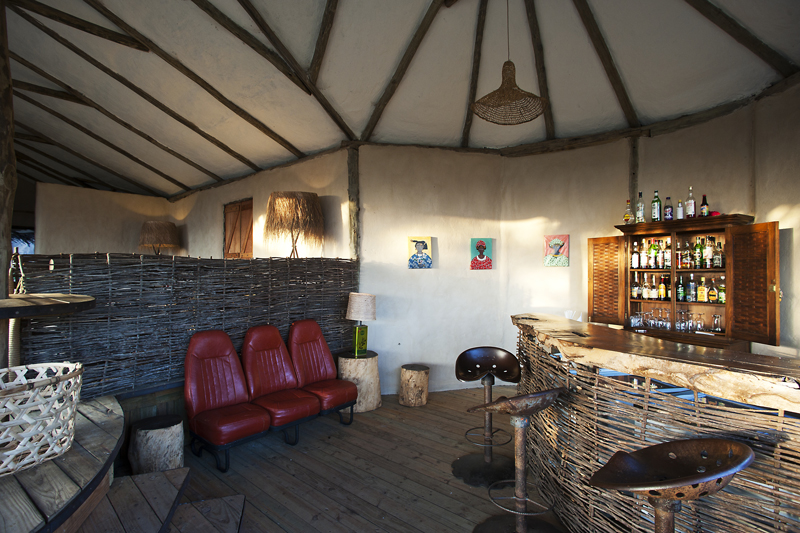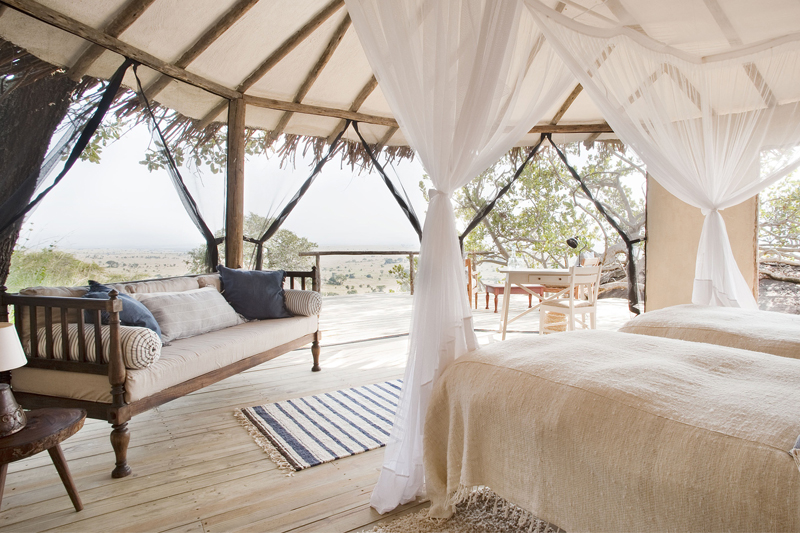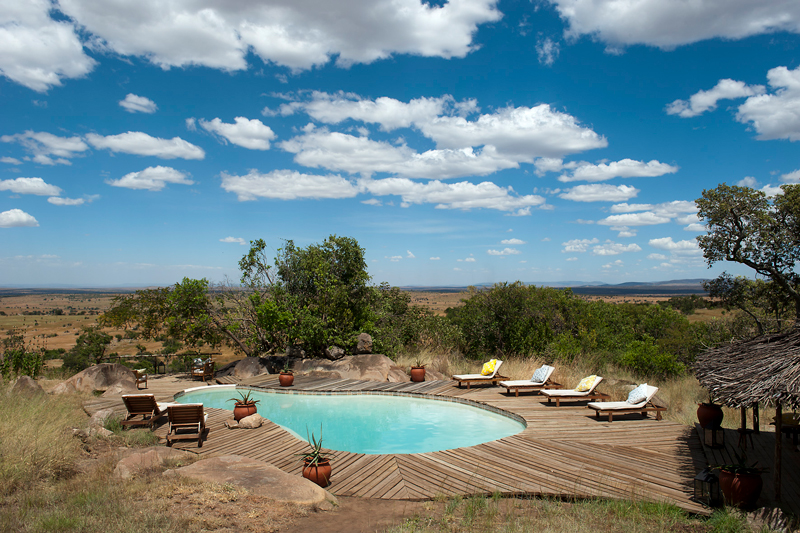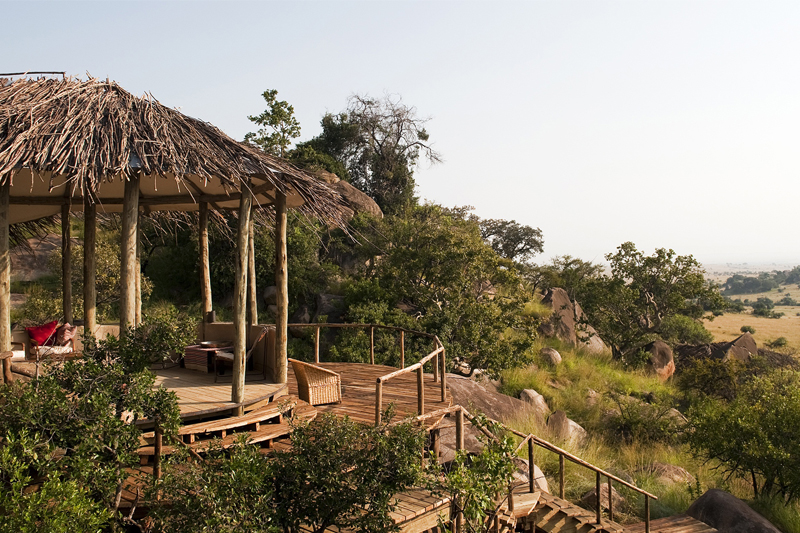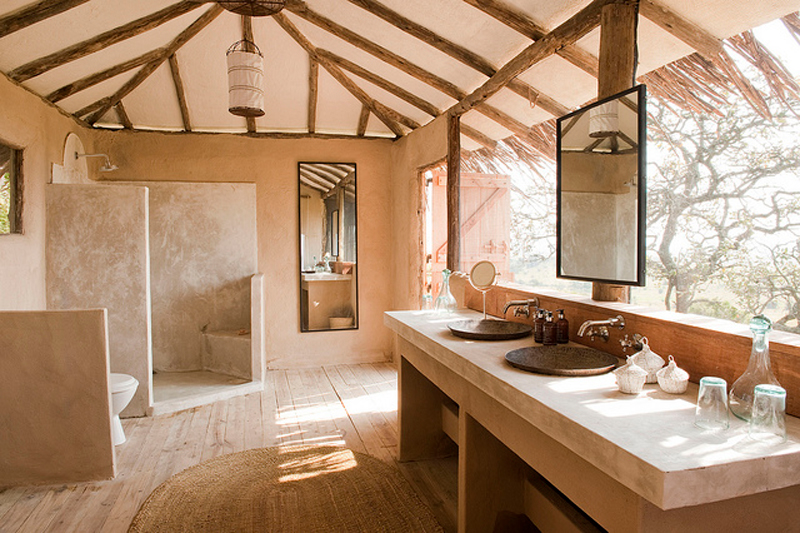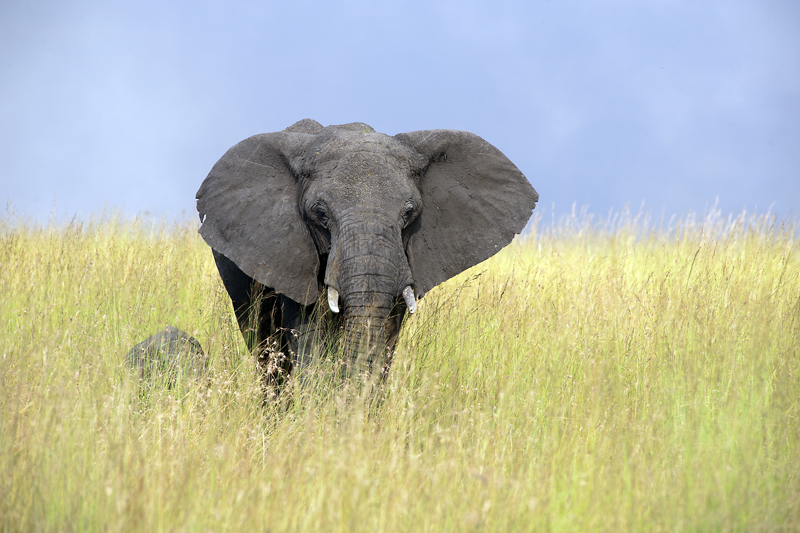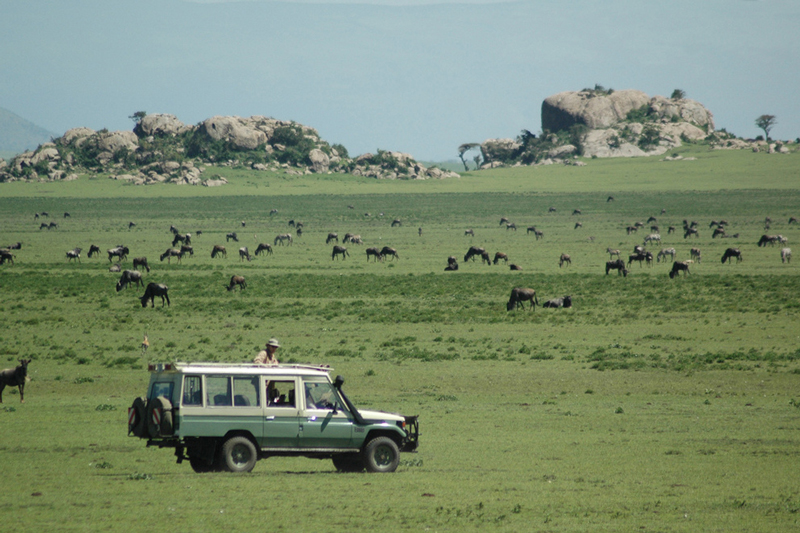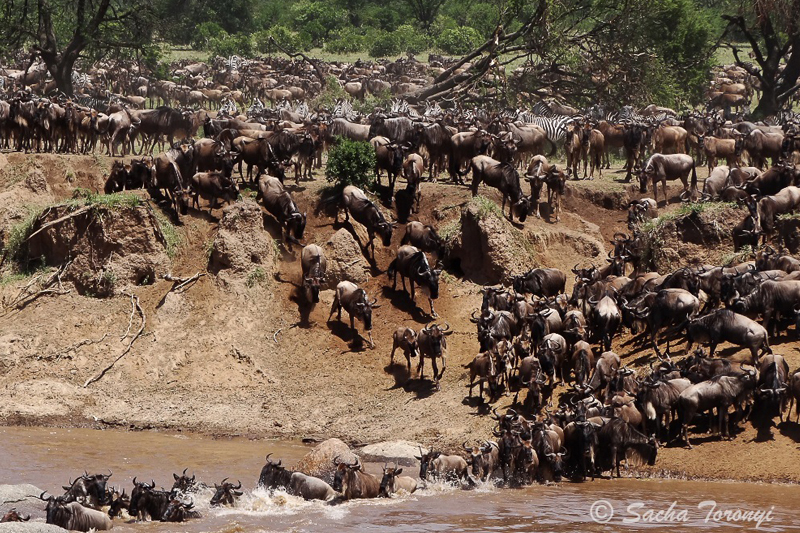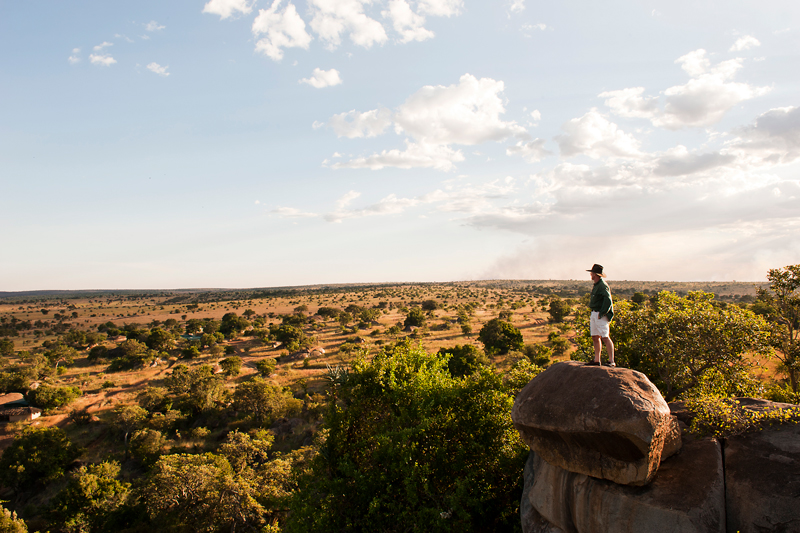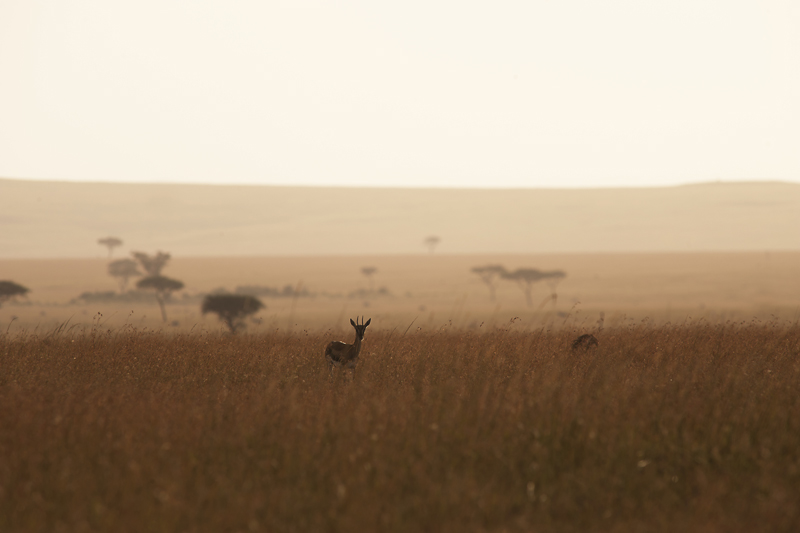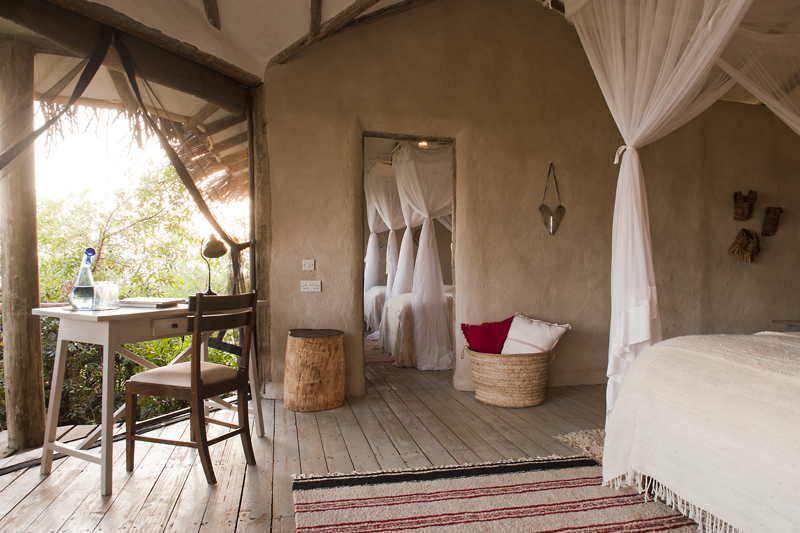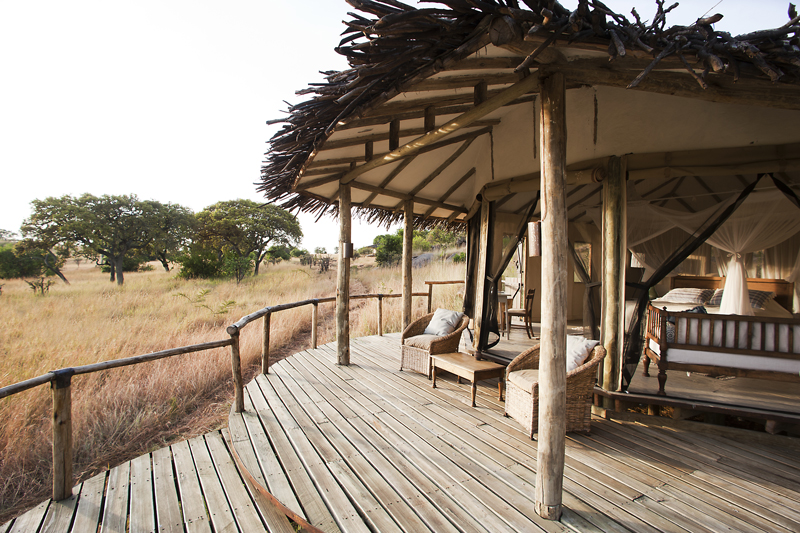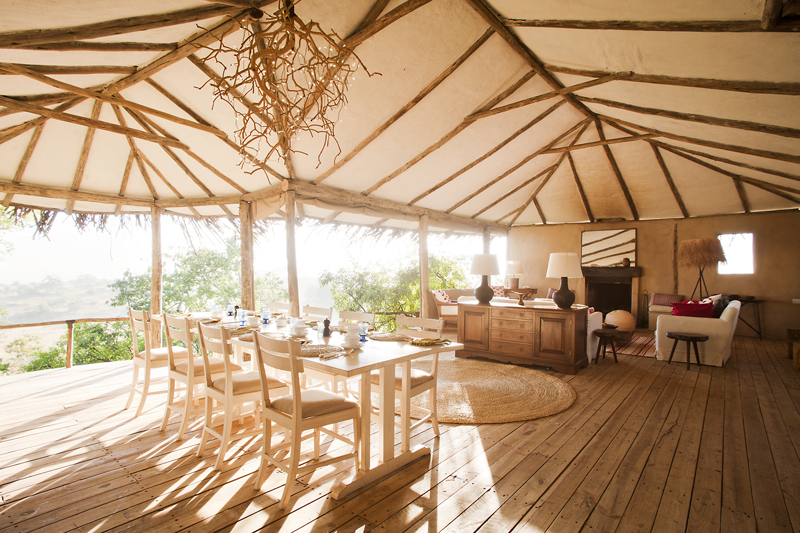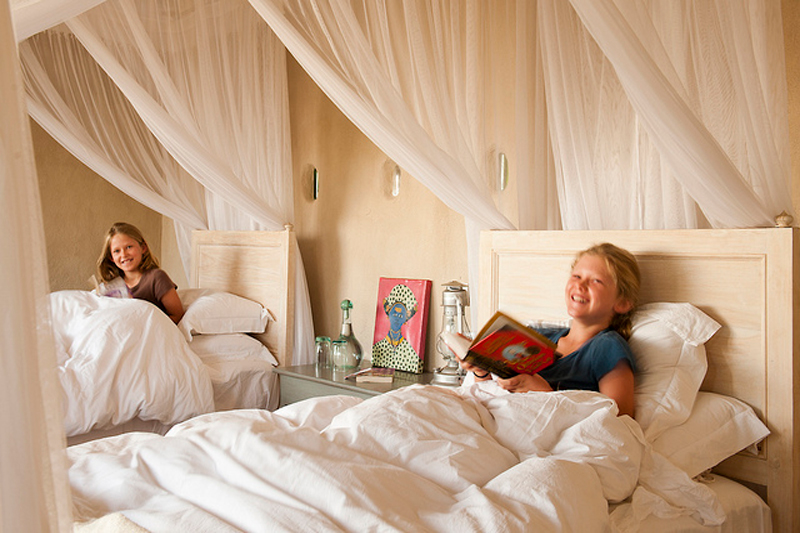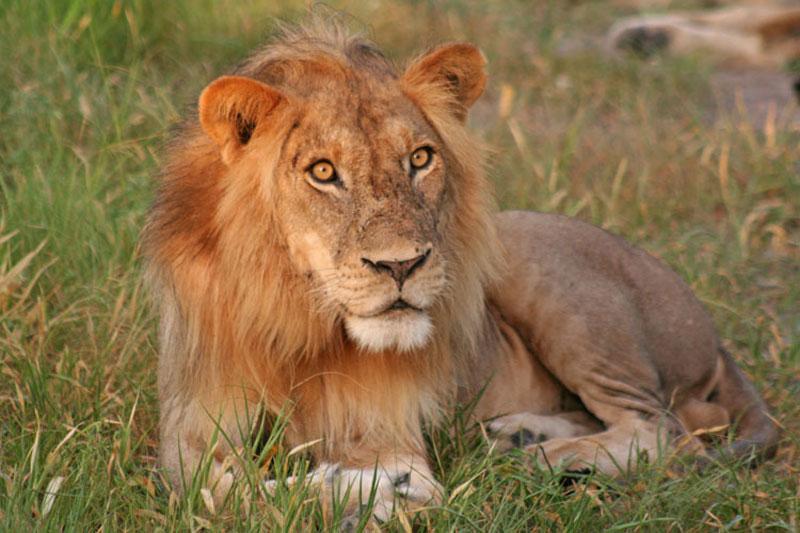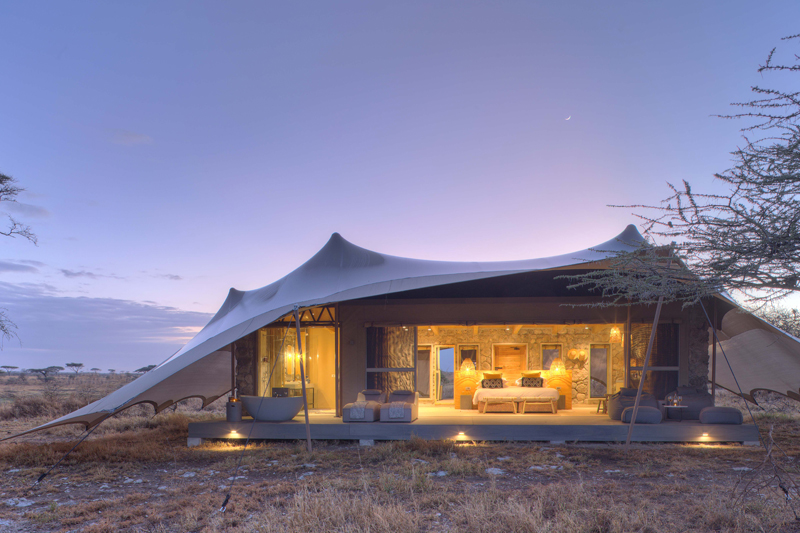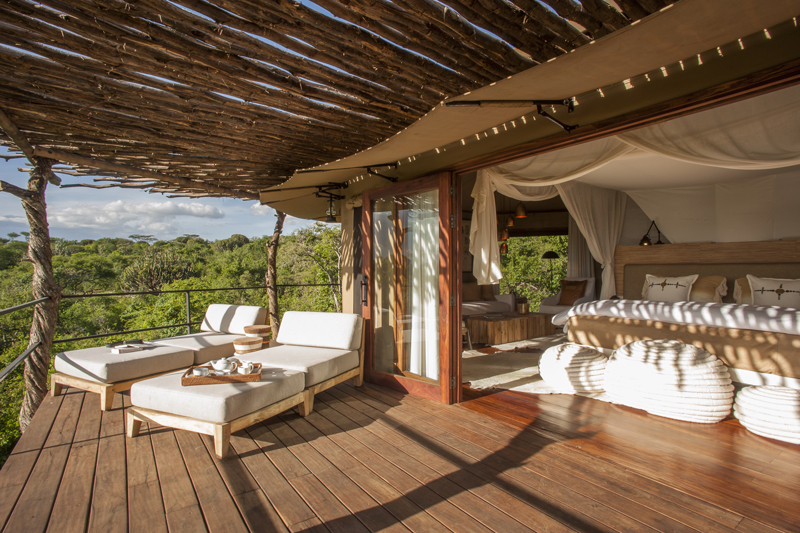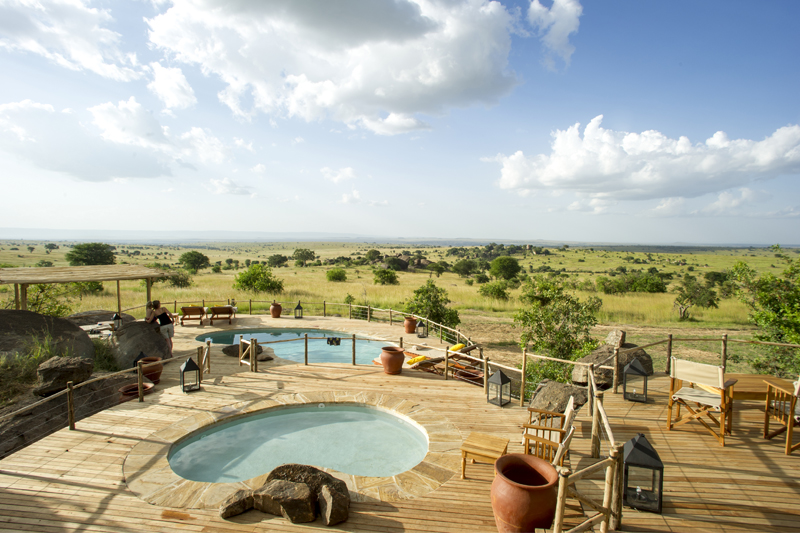Lamai Serengeti
Lamai Serengeti is a partially tented boutique safari lodge set around a rocky kopje in the Wogakuria Hills near the Mara River in the northern Serengeti.
Lamai Serengeti is an exclusive and well run property with a commanding position and stunning views out over the northern Serengeti. Set amongst the boulders of a kopje, on a few different levels, the lodge has a cosy and individual feel. The location is good for exploring the northern Serengeti whilst having close access to the Mara River and potential river crossings from July to early November (only downside is that it naturally isn’t cheap at this time of year). The rooms are very comfortable with a slightly rustic style, which we like, and canvas is used at the front and side so that you are not cut off from the sounds of nature and it still feels like you are on safari! Some of the rooms do require guests to climb up and down several steps, but they all have lovely views. The ethos of Nomad Tanzania, who own and run the lodge, is very good with the focus being on the guiding, hospitality and overall safari experience, rather than simply on providing luxury accommodation. The combination of a beautiful lodge and the friendly welcome and sophisticated Nomad service make this a great option in the northern Serengeti if you are looking for something more substantial than a traditional tented camp. There is a swimming pool which combined with the lovely views also makes Lamai Serengeti a potentially very relaxing option too. From January to March (quiet season in the northern Serengeti) the rates are lower and this is a great place to end a northern Tanzania safari with excellent exclusivity and relaxation as well as scenery, service and game viewing.
Rooms
Lamai Serengeti is split into two sections. The main lodge has 10 semi-tented rooms, whilst at the end of the lodge a further two rooms offer a private camp experience known as Lamai Private. It is possible for two more rooms from the main lodge to be utilised here and increase Lamai Private to four rooms for larger groups if need be. All the rooms in both sections are very comfortable and have a natural and slightly rustic feel, in keeping with the safari ethos. They have plumbed en suite facilities including a toilet, shower and double vanity. To the front is a furnished verandah with splendid views over the surrounding plains. Two of the rooms in the main lodge and one in the private camp have a second twin bedroom, making them ideal for families.
Central Areas
Each of the two camp sections is operated separately with its own bar, dining area and rock swimming pool. There is a shared adjoining library and map room. Due to its hillside location, Lamai Serengeti is not best suited to clients with any walking difficulties.
Facilities
Wi-Fi – Yes
Power for Charging – Yes
Swimming Pool – Yes
Habitat & Wildlife
With an area of some 14,000 sq. km, Serengeti is probably the best-known wildlife sanctuary in the world. The ecosystem includes the National Park itself, the Ngorongoro Conservation Area, Maswa Game Reserve and Kenya’s Masai Mara National Reserve, together forming one of the most complex and least disturbed ecosystems on earth. The landscape was originally formed by volcanic activity in the Ngorongoro highlands and it varies from the open short grass plains in the south, to savannah and scattered acacia woodlands in the centre, to extensive woodland and black clay plains in the west, to hilly wooded grassland in the north. Most of the permanent water is found towards the northern and western areas, the lack of permanent water and food in the south being the main reason for the annual migration.
The park is home to approaching 2,000,000 wildebeest, 500,000 Thomson’s gazelle and 250,000 zebra: the largest concentration of plains game in Africa. More than 30 species of herbivores are found here, as well as all the major predators and nearly 500 species of birds.
The northern part of Serengeti is a huge area of open plains, rolling hills and acacia woodland, intersected by numerous small streams which flow into the Mara River. The Mara River is a natural focal point, and most camps are located in the Kogatende region to the south of the river. To the north of the river is a section of the park known as Lamai, whilst to the south of Kogatende are the Wogakuria Hills where the rolling hills are interspersed with rocky granite outcrops. The plains stretch east and west to the boundaries of the park, and in the east continue into the Loliondo Game Controlled Area.
The northern Serengeti is exceptional for lion, cheetah and leopard sightings, whilst hyaena, serval, African wild cat, elephant, buffalo, hippo, crocodile, giraffe, eland, topi, jackal, ostrich and impala can also be seen. Wild dogs are making a comeback in the region and are very occasionally encountered, whilst black rhino can sometimes be seen in the north-eastern region around the Sand River.
Although this region offers a wonderful all year round safari experience, it is busiest from July to October when hundreds of thousands of wildebeest, gazelles and zebra congregate on these northern plains. The herds usually arrive in late June or early July, travelling up from the southern and western Serengeti on their annual migration. Many of the herbivores will cross into Kenya’s Masai Mara, but large numbers remain in the northern reaches of the Serengeti, where the Mara River provides permanent water. This movement of so many animals can be dramatic, especially when they cross the Mara River, which can happen at any time between July and early November. ‘River Crossings’ are a favoured highlight for wildlife enthusiasts and photographers, as hundreds of wildebeest stampede into the river whilst crocodiles lie in wait. Around October/November, as the rain clouds gather, the herds head south once more to calve on the nutritious short grass plains of the Southern Serengeti and Ngorongoro Conservation Area.
Activities
Game viewing activities concentrate around day time game drives with a private guide and vehicle included for each set of guests, meaning days can be planned to suit, often with bush breakfasts or sundowner drinks provided at suitable vantage points. Nature walks are possible at extra cost, but there is a limited area in which you can walk. Visits to nearby communities are also an option, but distances to the villages are greater than is really ideal and this should not be a focus of a visit to the northern Serengeti.
Seasons
Lamai Serengeti is open from June to mid-March each year, with the migration season running from July to early November.
Lamai Serengeti accepts children from 8 years old and is very suitable for families. The family suites are ideal with internally linked bedrooms, and there is a lovely swimming pool around which to spend the heat of the day.
Nomad Tanzania, owners of Lamai Serengeti, have made it their mission to “harness the power of Nomad to create life-enhancing opportunities”. They do this by focussing on three core areas:
Lifelong learning & growth – through supporting local talent and providing funding for business support and apprenticeship, using their business to create career opportunities and supporting local schools and wildlife education, Nomad recognises the importance of education and opportunity. Their meal-a-day programme feeds over 700 children across seven schools, while their student safari programme runs across many of their camps, allowing the next generation to foster an appreciation wildlife and wilderness.
Health & well-being – Nomad opens their camps for periods for medical outreach to allow doctors, dentists and other professionals to have access to a base, cars and planes to treat communities in the remote areas they operate.
Conservation & environment – in addition to keeping their own footprint as light as possible, Nomad Tanzania supports local projects and environmental partners in the areas they operate. This includes donating to de-snaring efforts and supplying bednights, vehicles and logistics where possible.
Nomad Tanzania is a member of Pack For A Purpose and guests may use the space in their luggage to bring in donations of items in need relevant to the location they are visiting.
In the Serengeti area, Nomad supports the Hope Centre – a ‘safe house’ offering refuge to young girls fleeing from Female Genital Mutilation and child marriage. All girls can continue with their education during a stay here and for older girls, vocational training is offered.
They also support the Frankfurt Zoological Society Desnaring Program, which employs teams of rangers to find poaching camps and remove wire snares. Their work is making an impact on illegal trapping and poaching of wildlife in one of the country’s most significant ecosystems.



